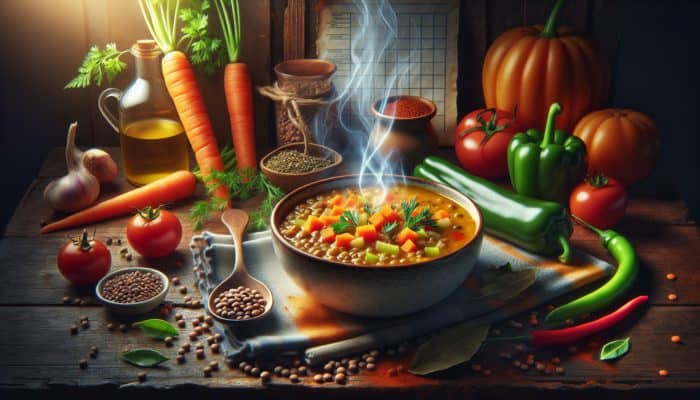Maximizing the Advantages of Adaptogens for Superior Stress Management
What Exactly Are Adaptogens and How Do They Function in Our Bodies?

Adaptogens are remarkable natural compounds that have gained recognition for their extraordinary capability to help the body manage various types of stress, including physical, chemical, and biological challenges. These powerful substances play a crucial role in enhancing the body’s overall stress response, supporting homeostasis, and fostering improved well-being. Some of the most recognized and effective adaptogens include:
- Ashwagandha
- Rhodiola Rosea
- Holy Basil
- Schisandra
- Reishi Mushroom
- Ginseng
- Licorice Root
- Eleuthero
Throughout history, various cultures have embraced adaptogens not only for their stress-relieving properties but also for their potential to boost vitality and promote longevity. The harmonizing qualities of these substances make them integral to traditional healing systems such as Ayurveda and Traditional Chinese Medicine, where they have been utilized for centuries to enhance health and resilience.
How Do Adaptogens Influence the Body’s Stress Response Mechanisms?
Adaptogens play a pivotal role in regulating the body’s stress response system. They interact with the hypothalamic-pituitary-adrenal (HPA) axis, a complex network that governs hormones that affect stress, energy levels, and mood. By positively influencing the endocrine system, adaptogens help cultivate balance and resilience, enabling the body to adapt more effectively to both acute and chronic stressors.
Each adaptogen operates through distinct mechanisms. For instance, ashwagandha is renowned for its ability to lower cortisol levels, the primary stress hormone, while Rhodiola may enhance the production of serotonin, a key neurotransmitter that regulates mood. This diverse range of actions allows adaptogens to support various physiological functions, including boosting energy, enhancing cognitive function, and stabilizing emotional health.
Unlocking the Health Advantages of Adaptogens for Holistic Well-Being
Integrating adaptogens into your daily life can unveil an array of benefits significantly enhancing your overall health and wellness. These advantages may include:
- Improved mental clarity and enhanced focus
- Reduction in fatigue and a noticeable increase in energy levels
- Strengthened immune function
- Better sleep quality and restfulness
- A more stable mood and improved emotional balance
- Enhanced physical performance and stamina
- Support in achieving hormonal balance
- Greater resilience against stress and anxiety
By harnessing the unique benefits of various adaptogens, individuals can customize their usage to align with specific health objectives. Whether the goal is to alleviate mental fatigue or enhance immune resilience, adaptogens provide a versatile and powerful means to promote health and wellness.
Proven Strategies for Effortlessly Integrating Adaptogens Into Your Daily Diet

How Can You Start Utilizing Adaptogens for Maximum Impact?
Experts often recommend initiating your journey with adaptogens by beginning with low doses to observe how your body reacts. This individualized approach enables you to identify which adaptogens resonate best with your unique physiology and lifestyle. For example, many individuals have experienced success by incorporating ashwagandha into their morning rituals, resulting in reduced anxiety levels throughout the day.
Real-world testimonials illustrate the effectiveness of this approach. Take, for instance, a busy entrepreneur who added Rhodiola to her daily smoothie; she reported not only improved stress management but also a marked boost in her productivity. These anecdotes underline the importance of customizing adaptogen consumption based on personal experiences and preferences.
What Are the Best Practices for Effectively Utilizing Adaptogens?
When incorporating adaptogens into your diet, adhering to established best practices can dramatically enhance their efficacy. One effective strategy is to cycle through different adaptogens—utilizing them for several weeks followed by a break—to prevent tolerance development and maintain the body’s responsiveness to these potent herbs. Additionally, combining adaptogens with a balanced diet rich in whole foods can further amplify their health benefits.
Here are several actionable steps to effectively incorporate adaptogens into your daily routine:
- Commence with one adaptogen at a time to monitor individual effects
- Integrate adaptogens into familiar meals, such as smoothies or soups
- Track mood, energy levels, and overall well-being to adjust dosages as needed
- Consult with a healthcare professional for personalized guidance
Incorporating adaptogens can be a seamless process, allowing individuals to integrate these beneficial substances into their daily lives without feeling overwhelmed.
Can You Safely Utilize Adaptogens for Prolonged Periods?

The long-term usage of adaptogens is generally deemed safe; however, consulting with a healthcare provider for personalized advice is always prudent. Unlike many pharmaceuticals, the majority of adaptogens do not exhibit addictive properties, allowing for extended use without significant risks.
Experts emphasize that while adaptogens can offer lasting benefits, individuals may eventually need to adjust their dosage or rotate the specific types of adaptogens used to sustain optimal effects. Regular consultations with healthcare professionals can facilitate this process, ensuring individuals maintain balance and effectiveness in their adaptogen regimen.
Creative Ways to Incorporate Adaptogens Into Your Daily Meals
How Can You Enrich Your Breakfast with Adaptogens?
Adding adaptogens to your breakfast can set a positive tone for your day, offering a refreshing start. For instance, incorporating ashwagandha into a morning smoothie or oatmeal can deliver stress-relieving benefits right from the outset. Adaptogens serve as a nutritious foundation, enhancing energy and focus throughout your morning.
Here are some breakfast ideas that effectively include adaptogens:
- Smoothies featuring ashwagandha, banana, and spinach
- Overnight oats topped with chia seeds and maca powder
- Protein pancakes infused with reishi or cacao
- Scrambled eggs seasoned with a hint of turmeric and black pepper
These meal options not only provide the advantages of adaptogens but also enrich the overall nutritional profile of your breakfast, reinforcing the notion of food as medicine.
How to Incorporate Adaptogens into Your Lunch and Dinner Recipes?
The flexibility of adaptogens allows them to be easily integrated into savory dishes, including soups, stews, and sauces. For example, a comforting broth enhanced with shiitake mushrooms can be fortified with adaptogenic herbs like astragalus for added immune support. By incorporating adaptogens into familiar meals, individuals can enjoy their flavors while reaping their health-enhancing benefits.
The options for including adaptogens in lunch and dinner are extensive. Imagine a vibrant vegetable stir-fry infused with Ginseng or a hearty lentil soup seasoned with turmeric; the possibilities for culinary creativity are nearly limitless. Moreover, the warming qualities of many adaptogens can deepen the flavors of various cuisines, inviting the exploration of diverse culinary traditions.
Transforming Snacks and Desserts with Adaptogenic Ingredients
Adaptogens can also elevate everyday snacks and desserts into health-boosting treats. For instance, energy balls made from dates, nuts, and a scoop of maca powder provide a nutritious post-workout snack. The rich flavor of dark chocolate can be enhanced with adaptogenic powders, yielding both satisfaction and health benefits.
Consider these inventive snack ideas that incorporate adaptogens:
- Energy balls crafted with oats, nut butter, and maca
- Dark chocolate bark infused with reishi powder
- Homemade granola bars featuring ashwagandha
- Fruit smoothies with a splash of holy basil extract
By reimagining snacks and desserts, individuals can indulge their cravings while simultaneously supporting their overall health.
Delving into the Realm of Adaptogenic Beverages for Enhanced Health and Wellness
What Are the Most Popular Beverages Infused with Adaptogens?
Adaptogenic beverages are gaining popularity, particularly for their calming effects and numerous health benefits. Herbal teas infused with ingredients like chamomile and schisandra offer not only soothing properties but also adaptogenic advantages. These refreshing drinks can be enjoyed at any time of day, providing a moment of peace in busy schedules.
The variety of adaptogenic beverages is extensive, ranging from turmeric lattes to functional tonics featuring ginger and ashwagandha. This diversity caters to different tastes and preferences, making it easy to incorporate these drinks into daily routines to foster mindfulness and relaxation, ultimately enhancing overall wellness.
How to Create Delicious Smoothies with Adaptogens?
Crafting adaptogenic smoothies is a delightful way to merge nutrition with great flavor. By blending fruits, vegetables, and adaptogenic powders, individuals can create nutrient-dense powerhouses that align with their health goals. The process is simple: combine a base of leafy greens with fruits like bananas or berries, and add a scoop of adaptogenic powder for an energizing lift.
Here are some easy-to-make smoothie recipes featuring adaptogens:
- Ashwagandha Banana Green Smoothie: Blend spinach, banana, almond milk, and ashwagandha for a refreshing start.
- Rhodiola Berry Smoothie: Mix together mixed berries, yogurt, honey, and rhodiola powder for a delicious treat.
- Tropical Maca Smoothie: Blend pineapple, coconut water, and maca powder for a refreshing drink.
- Reishi Chocolate Shake: Combine almond milk, cacao powder, and reishi for a rich, healthy dessert.
These smoothies not only taste fantastic but also support mental clarity, energy levels, and overall health, making them a superb addition to any diet.
Enhancing Your Coffee and Tea with Adaptogenic Benefits
Many are now discovering the benefits of incorporating adaptogens into their coffee or tea, achieving a balanced energy boost without the jitters commonly associated with caffeine. For instance, adding lion’s mane mushroom to coffee can enhance cognitive function, while ashwagandha in herbal tea may help alleviate stress levels.
This combination provides numerous benefits; it allows individuals to relish their favorite beverages while simultaneously reaping the health benefits of adaptogens. A straightforward approach is to stir in adaptogenic powders into a warm cup, resulting in a delightful blend of flavors and health advantages.
Scientific Evidence Supporting the Effectiveness of Adaptogens
What Insights Does Recent Research Reveal About Adaptogens?
Scientific studies increasingly validate the use of adaptogens for their stress-relieving properties and their potential to enhance cognitive function. Research has indicated that adaptogens such as Rhodiola Rosea can effectively lower cortisol levels during stressful situations, improving performance and resilience. These findings reinforce traditional claims, affirming that adaptogens can be a vital asset in modern wellness strategies.
Key studies shed light on the biochemical effects of adaptogens on the body, providing substantial evidence for their efficacy. Ongoing research continues to broaden our understanding of these ancient remedies, linking them to contemporary health challenges such as anxiety and burnout, thus underscoring their relevance in today’s health landscape.
How Do Adaptogens Affect Mental Health and Emotional Well-Being?
Adaptogens have been shown to alleviate symptoms of anxiety and depression by modulating stress hormones and neurotransmitter levels. For example, ashwagandha is recognized for its ability to reduce cortisol levels while promoting serotonin production, which can uplift mood and foster emotional stability.
Expert analysis indicates that adaptogen modulation of the HPA axis can lead to a more balanced emotional state. This is particularly significant for those seeking natural solutions to mental health challenges, highlighting the potential of adaptogens as supportive assets in mental health care and overall emotional wellness.
Do Adaptogens Provide Physical Health Benefits?
Adaptogens play a significant role in enhancing physical performance and endurance, making them invaluable for athletes and fitness enthusiasts. Research suggests that adaptogens like Cordyceps can enhance oxygen uptake and stamina, which are critical for optimal athletic performance.
To integrate adaptogens into workout routines, individuals might consume adaptogenic smoothies prior to exercise or utilize specific adaptogens, such as Ginseng, for recovery after physical activity. By strategically incorporating these powerful herbs, individuals can optimize their physical performance while concurrently supporting their overall health and wellness.
Can Adaptogens Boost Immune Function?
Adaptogens can significantly enhance the immune system by reducing inflammation and oxidative stress. Research has shown that certain adaptogens, such as astragalus, can improve immune response, potentially lowering the risk of infections and illnesses.
Experts elaborate on the mechanisms involved, noting that adaptogens help regulate immune cells, leading to a stronger defense against pathogens. By including adaptogens in daily diets, individuals can proactively enhance their immune health and resilience, especially during seasonal transitions and illness outbreaks.
Understanding the Safety and Potential Side Effects of Adaptogens
What Are the Common Side Effects Linked to Adaptogens?
While adaptogens are generally well-tolerated, some individuals may experience mild digestive discomfort or headaches. Beginning with small doses can help minimize these potential effects, allowing the body to adjust gradually. By staying attuned to their bodies and making necessary adjustments, users can ensure a positive experience with adaptogens.
It’s essential to be mindful of how adaptogens may interact with personal health conditions and medications. Being aware of one’s health status empowers individuals to navigate any side effects effectively.
What Steps Can You Take to Minimize Risks Associated with Adaptogen Use?
To mitigate risks related to adaptogen consumption, it is advisable to consult with a healthcare provider before commencing, particularly for those with pre-existing health conditions or who are currently on medications. This proactive approach ensures that potential interactions are adequately addressed, facilitating the safe and effective use of adaptogens.
Furthermore, practicing mindful consumption—such as starting with lower doses and closely monitoring individual reactions—equips individuals with the knowledge necessary to optimize their experience with adaptogens. Keeping a record of symptoms and responses can also be beneficial for tracking any changes over time.
Are There Specific Contraindications for Certain Adaptogens?
Some adaptogens may not be suitable for everyone, especially individuals with specific health conditions or sensitivities. For instance, those with hyperthyroidism should approach ashwagandha cautiously, while individuals on blood thinners may need to avoid Ginseng due to its blood-thinning effects.
Being aware of these contraindications and consulting with healthcare professionals for tailored advice is essential. Understanding which adaptogens are appropriate for one’s health status enables safe and effective integration into dietary routines.
Identifying High-Quality Adaptogens: Sourcing and Selection
Where Can You Find High-Quality Adaptogens?
High-quality adaptogens can be sourced from health food stores, online retailers, and specialty shops that prioritize organic and sustainably sourced products. Consumers should focus on suppliers known for their commitment to quality, ensuring that the adaptogens they purchase are both pure and potent.
Researching brands and reading customer reviews can assist in identifying reputable options. By prioritizing quality over convenience, individuals can ensure they receive the full spectrum of benefits these powerful herbs can offer.
How Can You Ensure the Purity and Potency of Adaptogens?
To guarantee the purity and potency of adaptogens, it is crucial to seek brands that provide third-party testing and certifications. Reputable companies typically offer transparency regarding their sourcing and production processes, enabling consumers to make informed decisions.
A comprehensive checklist for evaluating the quality of adaptogens includes:
- Confirming results from third-party lab testing
- Reviewing certifications (e.g., organic or non-GMO)
- Inspecting ingredient lists for purity
- Researching brand reputation and customer feedback
By following these guidelines, individuals can confidently select high-quality adaptogens for their health journey.
What Should You Look for on Adaptogen Product Labels?
When evaluating labels on adaptogen products, it’s essential to consider critical factors such as the type of adaptogen, dosage, and any additional ingredients. Understanding how to read and interpret labels is vital for ensuring proper usage and effectiveness.
For example, consumers should look for clearly listed adaptogens, along with the dosage per serving. Additionally, being aware of any fillers or additives allows for a more informed purchasing decision that aligns with personal health objectives.
Personalizing Adaptogen Use to Meet Individual Needs
How to Select the Right Adaptogen for Your Unique Health Goals?
Choosing the right adaptogen depends on individual health goals and specific needs. Whether someone aims to enhance mental clarity, combat fatigue, or boost immune function, selecting an adaptogen that aligns with their unique objectives is critical.
Factors to consider include personal health status, lifestyle, and any existing conditions. By assessing these elements, individuals can identify which adaptogens will be most beneficial, allowing them to create a supportive regimen tailored to their specific circumstances.
How to Adapt Adaptogen Use for Different Life Stages?
Adaptogens can offer significant advantages throughout various life stages, from childhood to old age. For example, children may benefit from gentle adaptogens like holy basil, while older adults might find support in Ginseng for increased vitality and stamina.
Exploring the application of adaptogens across the lifespan highlights how these herbs can adapt to meet individual needs. This versatility makes them invaluable tools for promoting health and resilience at any age.
How to Effectively Monitor and Adjust Your Adaptogen Intake?
Monitoring and adjusting adaptogen intake is crucial for maximizing their benefits. Individuals should regularly evaluate how they feel, noting any changes in mood, energy levels, or stress responses. This ongoing assessment enables the fine-tuning of dosages and types of adaptogens utilized.
Guidelines for tracking and modifying adaptogen use include maintaining a daily intake journal and documenting any physical or emotional responses. This self-awareness fosters a deeper connection to one’s health journey, ensuring that adaptogen use aligns with evolving needs.
How to Combine Adaptogens for Enhanced Health Benefits?
Combining different adaptogens can amplify their health effects, creating a synergistic approach to wellness. For example, pairing ashwagandha with Rhodiola may offer comprehensive stress relief while simultaneously boosting energy levels.
Common combinations include:
- Ashwagandha and Rhodiola for stress relief and resilience
- Maca and Ginseng for increased energy and stamina
- Holy Basil with Reishi for enhanced immune support
- Licorice Root combined with Schisandra for hormonal balance
Exploring these combinations opens the door to personalized solutions that can effectively address multiple health concerns simultaneously.
How to Develop Customized Adaptogen Protocols?
Creating personalized adaptogen protocols begins with a thorough health assessment. Evaluating factors such as lifestyle, stress levels, and health goals allows for the formulation of a customized regimen that optimizes the use of adaptogens.
Steps to establish and implement these protocols include:
- Consulting with a healthcare professional for expert advice
- Identifying specific health goals and needs
- Selecting appropriate adaptogens based on the assessment
- Establishing a monitoring system to track progress over time
This tailored approach ensures that individuals can maximize the benefits of adaptogens, ultimately leading to improved holistic well-being.
Frequently Asked Questions About Adaptogens
What Are Adaptogens and Their Primary Purpose?
Adaptogens are natural substances that assist the body in adapting to stress and enhancing overall health. They support the body’s stress response and improve resilience against various challenges.
How Do Adaptogens Function Within the Body?
Adaptogens modulate the hypothalamic-pituitary-adrenal (HPA) axis, balancing stress hormones and promoting homeostasis, thereby enhancing resilience to stressors.
What Health Benefits Can I Anticipate from Adding Adaptogens to My Diet?
Potential benefits include improved mental clarity, reduced fatigue, enhanced immune function, and an overall boost in vitality and well-being.
Is Long-Term Use of Adaptogens Considered Safe?
Yes, adaptogens can generally be used long-term; however, it is advisable to consult with a healthcare provider for personalized guidance based on individual health needs.
How Can I Easily Incorporate Adaptogens into My Meals?
Adaptogens can be seamlessly integrated into smoothies, soups, stews, and even snacks. Creative recipes can enhance both flavor and nutritional value, making them pleasurable to consume.
Are There Any Side Effects Linked to Adaptogen Use?
Common side effects may include mild digestive discomfort; starting with small doses can help minimize potential adverse effects while allowing the body to adjust.
How Can I Determine If I’m Purchasing High-Quality Adaptogens?
Seek products with third-party testing and organic certifications when sourcing adaptogens—research brands for transparency and customer reputation to ensure quality.
What Factors Should I Keep in Mind When Selecting an Adaptogen?
Consider your health goals, lifestyle factors, and any existing health conditions when choosing an adaptogen to ensure it aligns with your specific needs and objectives.
Are Adaptogens Safe for Children?
Some adaptogens are safe for children, such as holy basil, but it is essential to consult with a healthcare provider before introducing them into a child’s regimen.
How Can I Monitor the Effectiveness of Adaptogens?
Maintaining a journal of your mood, energy levels, and physical responses can help track the effectiveness of the adaptogens you’re using over time, promoting a deeper understanding of their impact.
Connect with us on Facebook for more insights!
The Article Integrating Adaptogens Into Diets: A Universal Guide appeared first on https://athleticsupplement.com
The Article Adaptogens in Diets: Your Ultimate Integration Guide Was Found On https://limitsofstrategy.com


























